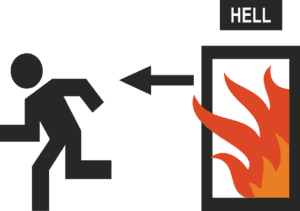The Importance of Fire Safety Systems: Securing Lives and Property

In today’s fast-paced world, life and property must be ensured. Fire prevention and protection are among the most essential parts of building safety. Fire Safety Systems are engineered solutions that detect, control, and reduce the consequences of fire, providing an invaluable layer of protection for residential, commercial, and industrial hazards. Keep reading to discover some critical key components of a modern fire safety system, its benefits, and the best practices to consider with it.
Fire Safety Systems have essential components.
Total fire safety solutions rely on integrated elements to increase the reliability of protecting life and property. The primary components include:
Fire Detection Systems
- Smoke Detectors: Smoke particle sensing devices that emit an alarm before a fire spreads.
- Heat Detectors: Sensors that sense the rise in body temperature to warn others about the fire at the earliest stage.
Fire Alarm Systems
- Manual Call Points: Allows the occupants to manually activate an alarm in case of a fire.
- Audible and Visual Alarms: Silencers, bells, and flashing lights can alert people to fire hazards.
Fire Suppression Systems
- Sprinkler Systems: Release water automatically as high heat is detected.
- Gas Suppression Systems: Do not use water to suppress fire; use inert gases or chemical agents.
Exit Sign and Emergency Lighting
- Just as crucial for guiding occupants to safety in case of a power failure.
Fire Extinguishers
- Helping to control small fires before they grow too big.
In different environments, Fire Safety Systems play a Role.
Residential Buildings
- Fire safety systems in homes prevent casualties and damage. Smoke detectors and sprinklers are standard features in modern residences.
Commercial Properties
- Offices, shopping malls, and hotels require advanced alarms, sprinklers, and emergency lighting systems. Regular drills and system maintenance are vital.
Industrial Facilities
- Flammable material is often stored in manufacturing plants and warehouses. Reducing the risks of these heavily relies on remarkable suppression and advanced monitoring.
Benefits of Installing Fire Safety Systems
- Early Detection and Warning: Alerts given by fire detection systems are timely enough to prompt evacuation.
- Minimized Property Damage: Sprinklers and suppression units, usually automated systems, help control the fire’s spread.
- Compliance with Regulations: Fire safety systems in many jurisdictions must comply with building codes and safety standards.
- Insurance Premium Reductions: Fire safety systems in properties may be certified, making them for lower insurance rates.
Best Practices for Fire Safety System Management
- Regular Maintenance
Routine alarms, sprinklers, and extinguisher inspections are conducted to ensure everything functions correctly.
- Employee Training
Train your staff to use fire extinguishers, know evacuation routes, and see alarm signals.
- System Upgrades
Constantly update outdated components by bringing changes to meet the present-day and technological standard ranges.
- Integration with Smart Systems.
Think of combining fire safety systems with building management systems, which should be centrally controlled.
Conclusion
Investing in comprehensive fire safety systems to protect lives and assets is legally mandated in many areas, and in others, it is a moral responsibility. Modern, well-allowanced systems, coupled with occupant fire safety instruction, allow businesses and homeowners alike to know they have installed as safe an environment as possible. Fire prevention and preparedness will always win, improving our experience here on earth and providing peace of mind and a safer world.






